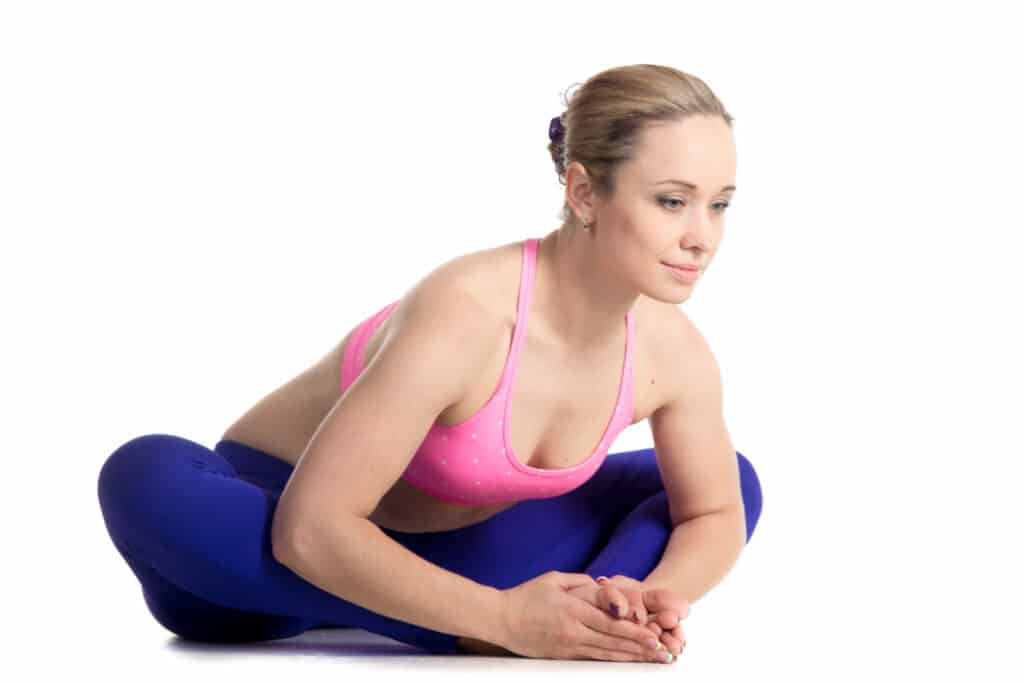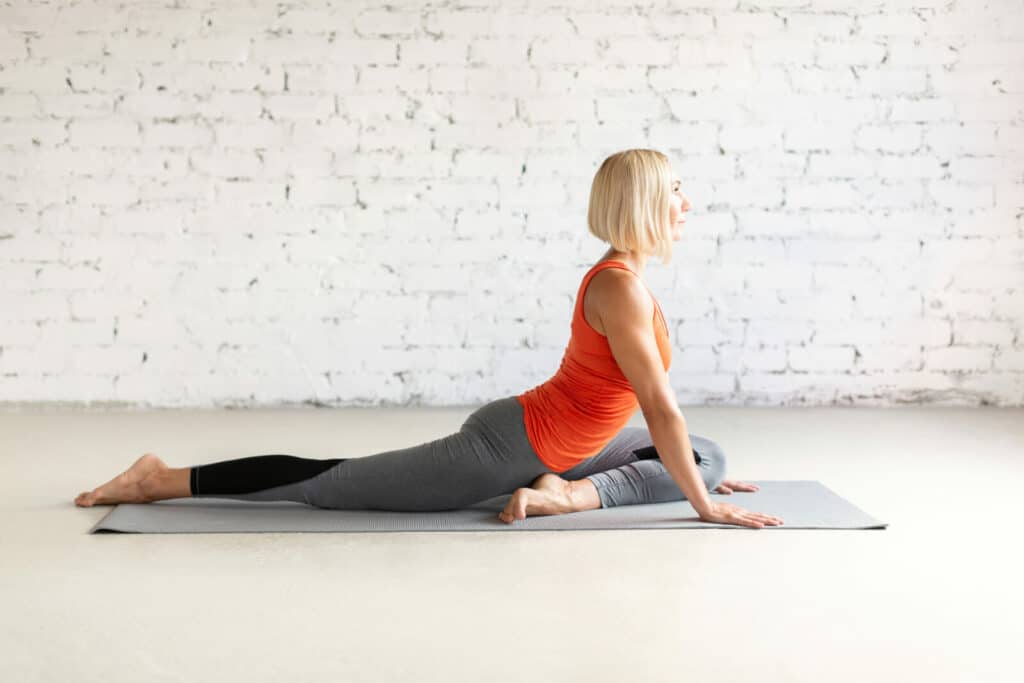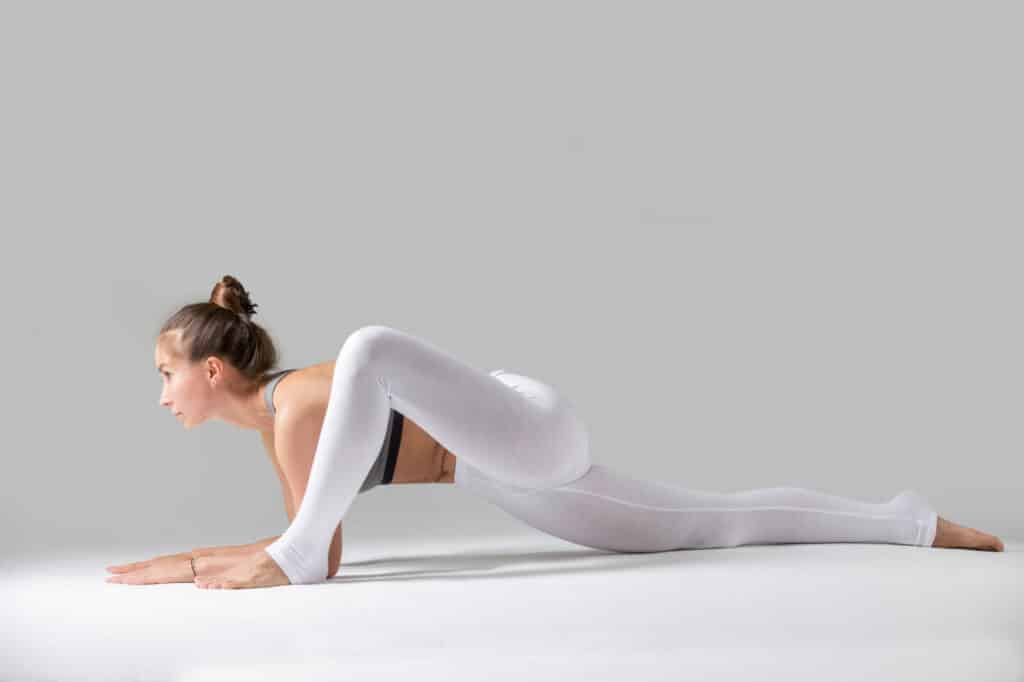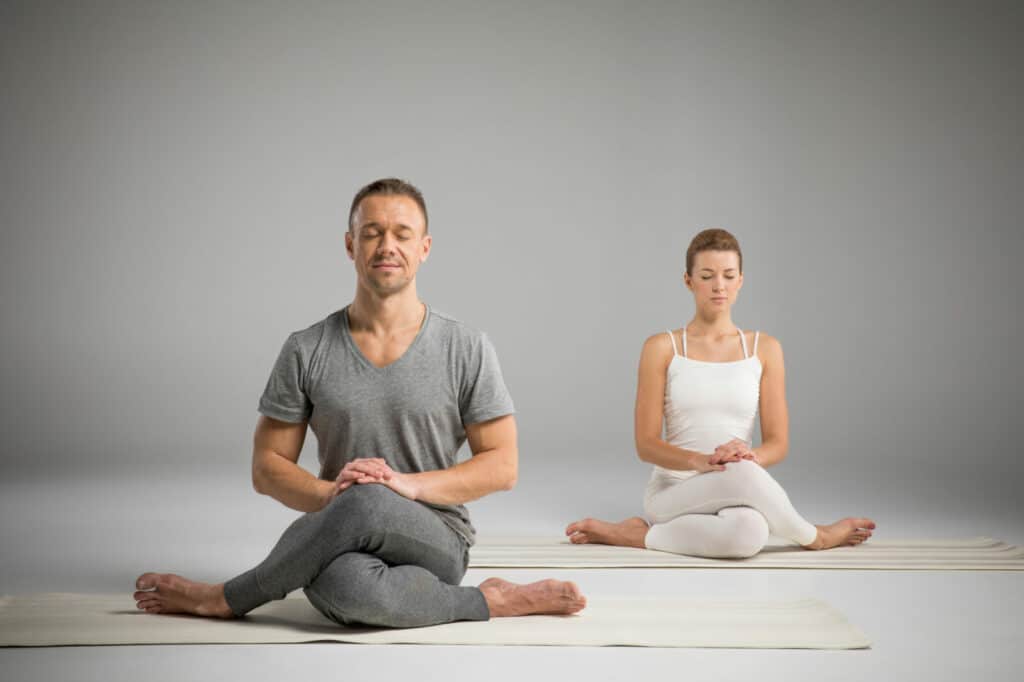Flexibility relates to the condition of your muscles and joints. Whether you want to shape yourself like a pretzel or just looking for healthy joints – yoga has exercises to achieve both goals.
Although all yoga styles have a complex approach to a human’s body, some are more effective if you want to improve your flexibility. And that’s where Yin yoga comes into a stage. This is a meditative, slower-paced practice where you hold a particular posture longer than in power Astanga, dynamic Vinyasa Flow, or static Hatha.
To get an effect on the deeper muscles and rarely used connectivity tissues, like fascia, ligaments, and joints, you’ll need a constant stretch of not less than 120 seconds. Yin yoga, thanks to its extended posture holds, gives you enough time to tune up with your body and to get your deep tissues working.
Who Can Practice Yoga for More Flexibility?
So, does anyone can actually do this yoga type? There are rather more myths and misconceptions around flexibility in yoga. For example, people often think they need to already be flexible to be able to attend even a beginner’s yoga class. For that reason, lots of them don’t even try yoga.
Yoga instructors dispel that myth right away: yoga is not reserved for flexible people only. Everyone with tight hip flexors, hamstrings, or shoulders can do yoga for flexibility.
Plus, for those tired of fast-paced activities and sweating in a gym, Yin yoga is the proper choice. It incorporates intense full-body exercises but gives a slower pace. So, you’ll get more meditative and calm training to round out your workouts.
Which Yoga Exercise Is Best For Flexibility?
I’ve included some basic yoga postures you can practice for flexibility. Please make sure to warm up before you start. Depending on the duration of the holds you may need 30-60 minutes for the below exercises.
Butterfly Pose
Effect: On the physiological level, this posture decompresses the spine, stretches hip adductors, and opens the fascia that connects the sacrum and back of the neck. On the spiritual level, it works with liver meridians, helps release anger and resentment.

Start in a seated position, put your soles together, and place your heels about 20 from your pelvis. On the exhale, move forehead towards feet, round the spine, place your hands in front of your feet, and relax into the pose. You can also prop yourself with a yoga block under your forehead if you can’t reach your feet with it. Hold the position for 3-5 minutes. Come out of the pose slowly and take a few minutes to incorporate the effect of it before you move to another asana.
Sleeping Swan
Effect: Good to open hips; this pose gives an effective stretch for the quads and hip flexors. It helps to stimulate energy channels associated with the quads and hip flexors.

Start from downward facing dog. Lift the right leg up and bring it forward, bend the leg and place the knee on the mat so that it touches the wrist of the right hand. Ensure the left leg is just behind your left hip. If you’ve got space under your right glute – use a blanket or a small towel to fill in that space. Use a cushion or bolster to fold forward on it if you can’t reach the floor. Completely relax into the pose and concentrate on your sensations. Then repeat on the other side.
Why Yoga Is Good? 5 Unique Yoga Benefits Proved with Your Anatomy
Inside Dragon
Effect: Back leg hip flexor is the main target of this pose. On the energy level, this posture stimulates the stomach, kidney, and urinary meridians.

From a downward-facing dog, make a wide step forward with your right leg to the outer side of your right hand. Place the left leg knee on the mat and gently press it down. Hold for 3-5 minutes, and repeat on another side.
Shoelace Pose
Effect: deep stretch in hips and glutes. Urinary meridian gets stimulated in this asana, and so the parasympathetic nervous system is activated to provide rest and restoration to your muscles and tissues.

From tabletop position, cross your knees and slide your heels to the sides wide until it feels a comfortable stretch. Sit back between your heels. Fold forward on your crossed knees; let your spine round. Repeat on another side.
What Makes Flexibility So Important?
Every tension in your body is a reflection of your day. Stretching can also be a great way to get you moving in the morning or a way to relax after a long day. Yin Yoga unites stretching and relaxation into a beautiful combination and awards you with a wide range of benefits.
Benefits of Yin Yoga
- Joints hydration. Water makes up to 70% of fascia and joints volume in your body: compression and stretching in yoga poses affect tissue hydration. When you load the tissue, fluid from it is squeezed into a lymphatic system. When the load is released, it rests, and the new fluid is pulled back in. This action improves hydration and reduces the swelling caused by a sedentary way of life.
- Proprioception. Physical awareness of our outer and inner states can be increased due to the refining of the fascia’s sensory nature. Having time between poses to notice the effect of the asana can improve your sensing abilities. Although it’s still possible with dynamic yoga practice, slow yin yoga sequences allow you to devote ALL your mental energy to how your body feels.
- Improved mental and emotional condition. You can significantly decrease stress, anxiety, and the risk of depression if you use it as a regular practice along with improved flexibility. Thanks to the activation of a parasympathetic nervous system, which slows down your heart rate and breathing sequence, you’ll get that calm feeling at the end of your class.
- More natural energy flow. Yin yogis witness that this practice has much in common with Chinese acupuncture, but it does not use needles. Yin yoga poses influence the body’s energy meridians and channels. It releases the blocks so that the energy flows freely. On the physiological level, that results in more optimal performance of the body’s organs and systems.
- Restoring effect. And finally, the therapeutic practice of Yin yoga is also recommended for anyone with injuries. It will also work well for people with chronic muscle and joints conditions like arthritis or osteoporosis. Also, it can be a great starting point for ones interested in mindfulness and meditation.
Yoga for Flexibility FAQs
Why Are Some People More Flexible Than Others?
Some physical aspects do influence flexibility and make some people more flexible than others:
- Age: as you age, your joints tend to be less active and thus offer you a smaller range of moves.
- Genetics: some parameters of your body are predetermined by your genes. Structure and size of bones: larger bones offer less flexibility to the owner— the state of connective tissues and their degree of elasticity.
How Often Should I Do Yoga to Improve Flexibility?
You can practice yoga for flexibility from 2 to 5 times a week. Begin with 30 minutes sessions and increase the duration up to 90 minutes. We’d recommend starting with more accessible postures and fewer loads and increasing the load with time for beginners. Use yoga props to help create the proper position of joints and muscles.
Experienced yogis or athletes can practice every day. But remember to include restorative periods in-between sessions to let your muscles recover and incorporate the exercises’ effects.
How Long Does It Take to Become More Flexible?
Working on your flexibility takes time and effort. It’s all about consistency, concentration, and regular practice. Experienced yogi or an athlete, you’ll need to be steady and focused when you work towards your flexibility. Depending on your body condition and the practice schedule, you can notice the first results of yoga for flexibility in 2-4 weeks.